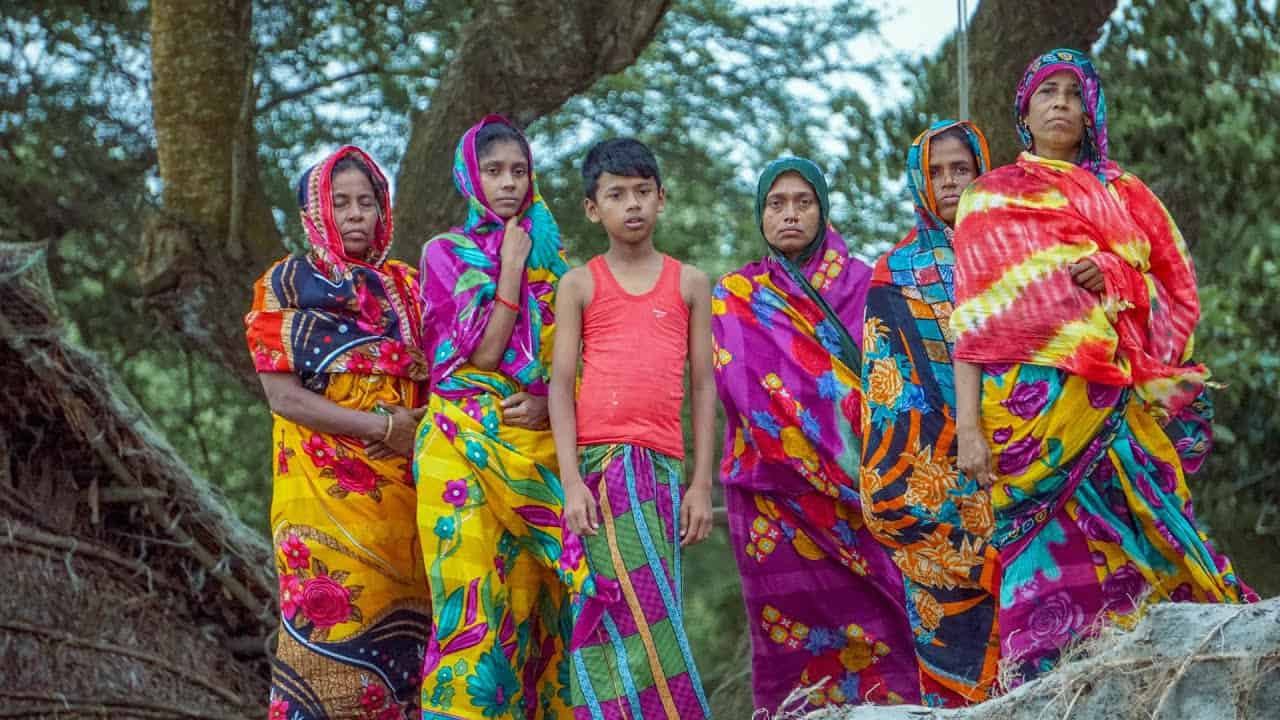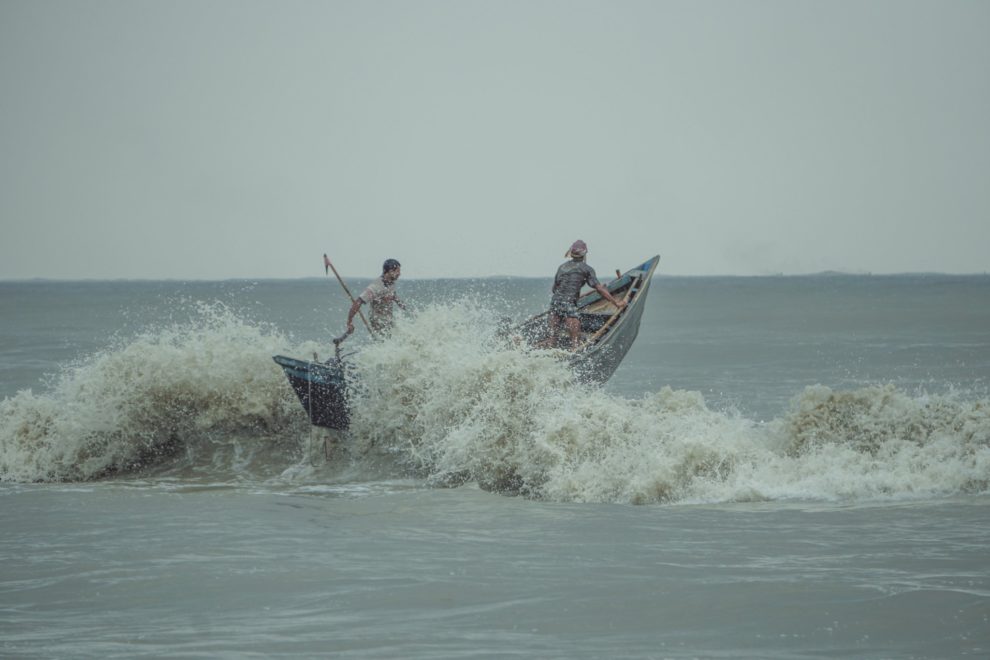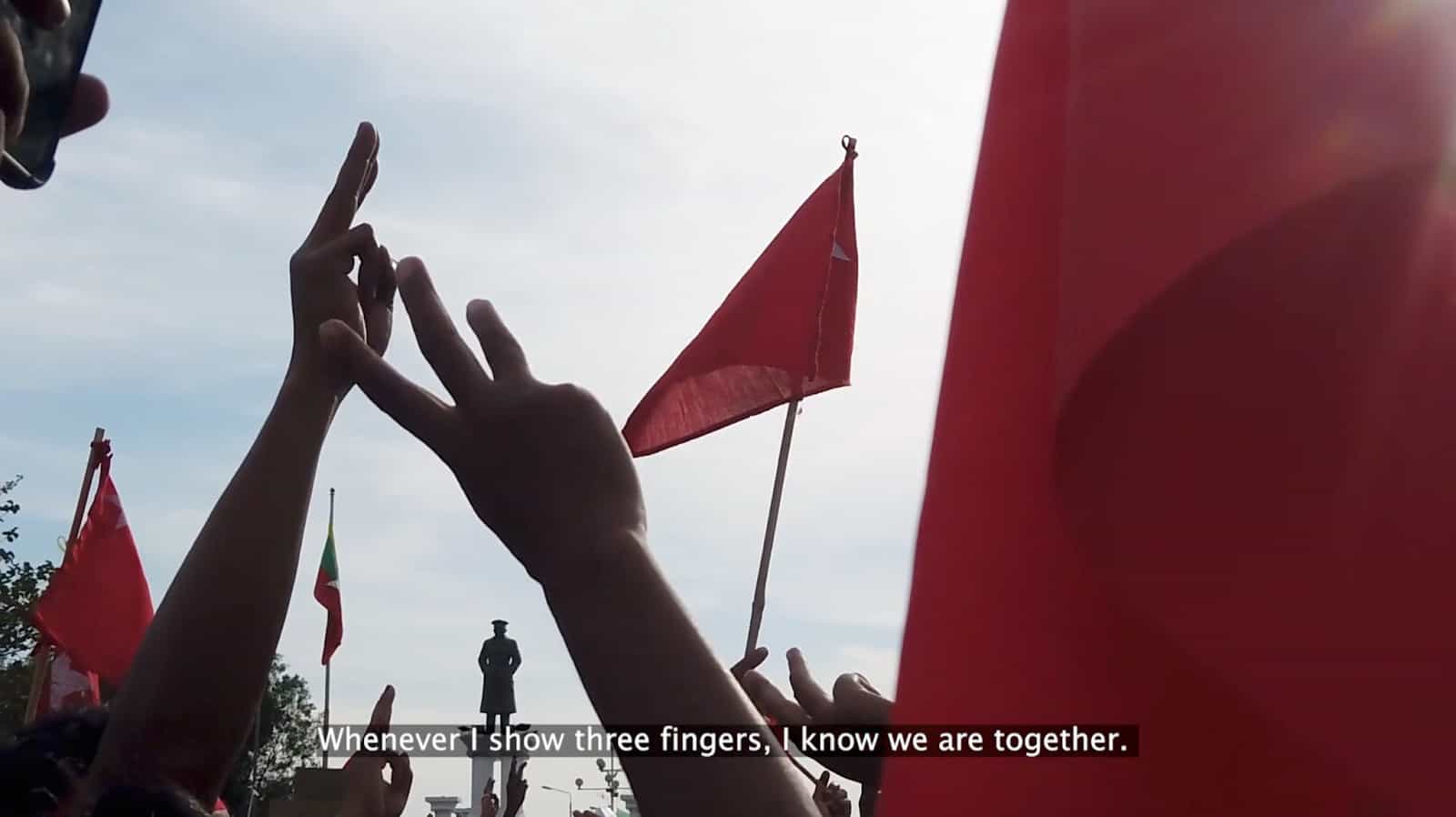The conflicting interaction between a city artist and the villagers of a fishing isle is at the core of young Bangladeshi director and writer Rezwan Shahriar Sumit's first feature “The Salt in Our Waters”. Even before its world premiere, scheduled at the BFI London Film Festival, the film has been already awarded France's CNC Aide aux cinémas du monde, TFL Audience Design Fund, Bangladesh's national film grant, and the Spike Lee Fellowship. The bar is high!
“The Salt in Our Waters” is screening at the BFI London Film Festival

City-man and sculptor Rudro (Titas Zia), decides to leave behind the chaos of Dhaka and spend some time on a small mangrove fishing island in the Bay of Bengal, to work but also to retrace the steps of his late father, a coastguard who once had fallen in love with that part of the country. Once on the island, he is warmly welcomed by the Chairman and Muslim leader (Fazlur Rahman Babu), while local fisherman Bashar (Ashok Bepari) offers him a place to stay and a hut to be turned into his studio. Bashar is one of the many fishermen working for the Chairman – practically the whole male population of the isle – and they are all puzzled by Rudro's anthropomorphic sculptures. They don't understand the practical “use” of art and immediately think the statues are idols. This skeptical atmosphere exacerbates when, at the opening of the fishing season, the catch proves very scarce. In fact, the usually abundant Ilish fish seems to have vanished. Bigotry, fuelled by the Chairman's sermons, makes its way through the God-fearing villagers; maybe Rudro's idols have something to do with the bad luck in fishing?
At the same time, Bashar's children – daughter Tuni (Tasnova Tamanna) and son Taher – with their eyes and mind free from preconceived ideas, are fascinated by Rudro's sketches and models and enjoy spending time with him, chatting and exploring the coasts and attending Rudro's classes of clay modelling with the kids of the village; inevitably, a tender friendship develops between Rudro and Tuni. But the villagers are more and more convinced that Rudro is the cause of their misfortunes and when a cyclone approaches the island, the Chairman points his finger at him as a scapegoat in an attempt of pushing the fishermen to risk their life against nature, instead of taking their families to safety.
Introducing a disrupting element in the seemingly uneventful life of a fishing island, Sumit finds a way to introduce the necessity of a dialogue between a culture anchored in the past and a new forward-looking attitude, especially in the shadow of the worries of a climate change's severe impact. Rudro is in the eye of the cyclone (physically and metaphorically), he is the pivotal axis around which many contrasting forces spin and clash; art and mundanity, city life and villagers, old and innovation, man and woman, bigotry and free will.
In one beautiful line expressing the diversity of point of views, Rudro and Tuni talk about a horrific storm that ravaged the island years earlier. “It looks like it took everything”, Rudro observes, but Tuni objects: “The ocean takes nothing, it provides”. The artist's view on things is a threat for some but at the same time a ray of hope for others like Tuni, and the way the film wraps at the end is a beginning other than an end, and an oddly positive one.
The look of “The Salt in Our Waters” is exquisite. In the hands and lenses of DoP Chananun Chotrungroj, whose portfolio includes other visually stunning works like “The Third Wife”, “Pop Aye” and “Don't Come Back From the Moon”, the island (a coastal village, in reality) appears like an old crusty dormant reptile. A soothing sand color in all its shades is the palette that defines the whole island, from the shore to the mangrove roots, the shacks, the driftwood, the fishing boats, and also fills the menacing sky and the roaring opaque milky sea. And then, like wildflowers, the costumes of women and children punctuate beautifully the muted landscape. The director made the risky bet of filming during the Monsoon season and the result is a testament to his vision.

Strong performances in all the main roles – Titas Zia is a theatre actor, Fazlur Rahman Babu a seasoned professional – are seamlessly combined with the good work of non-professional actors and local villagers. Sound design (Tiago Cardoso & Dinis Henriques) is also excellent; the mounting sound of the wind, like a wailing from nature, create a sense of slight discomfort. This reminder of an impending threat leaves space occasionally to composer Arnob's work and beautiful local songs.
Director Rezwan Shahriar Sumit has infused his debut film with an infinite love for his country and his people and with a robust confidence that positive changes and dialogue can be triggered by people with young hearts and eyes wide open.















